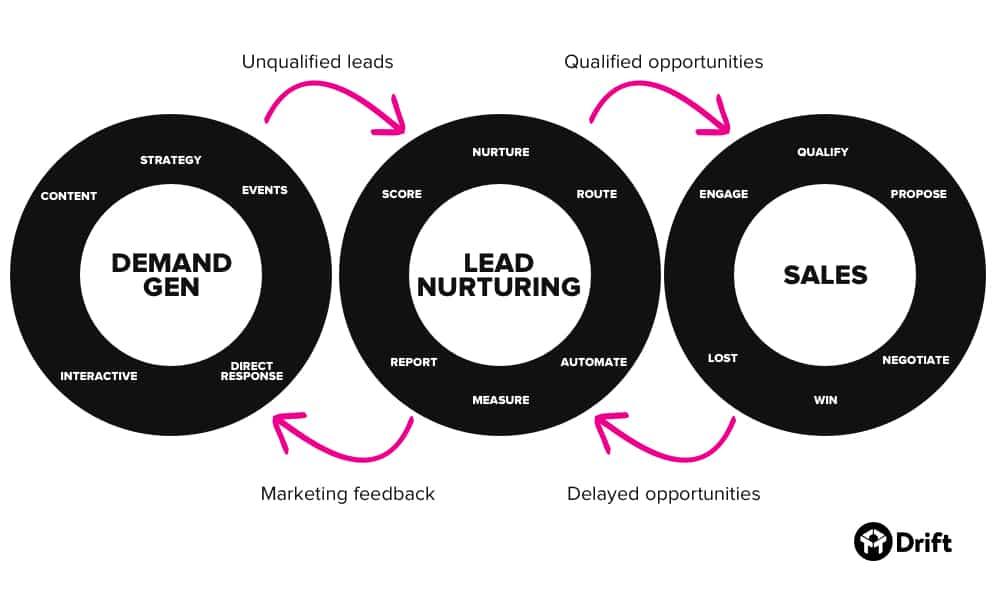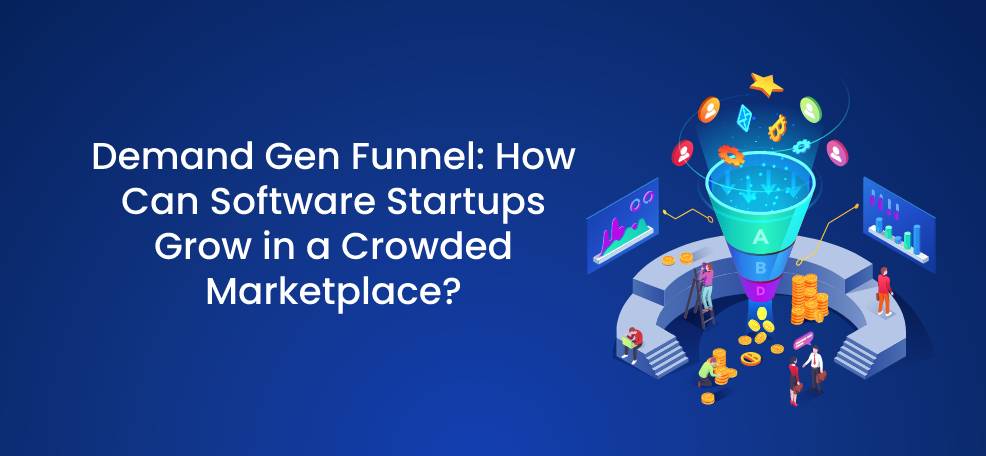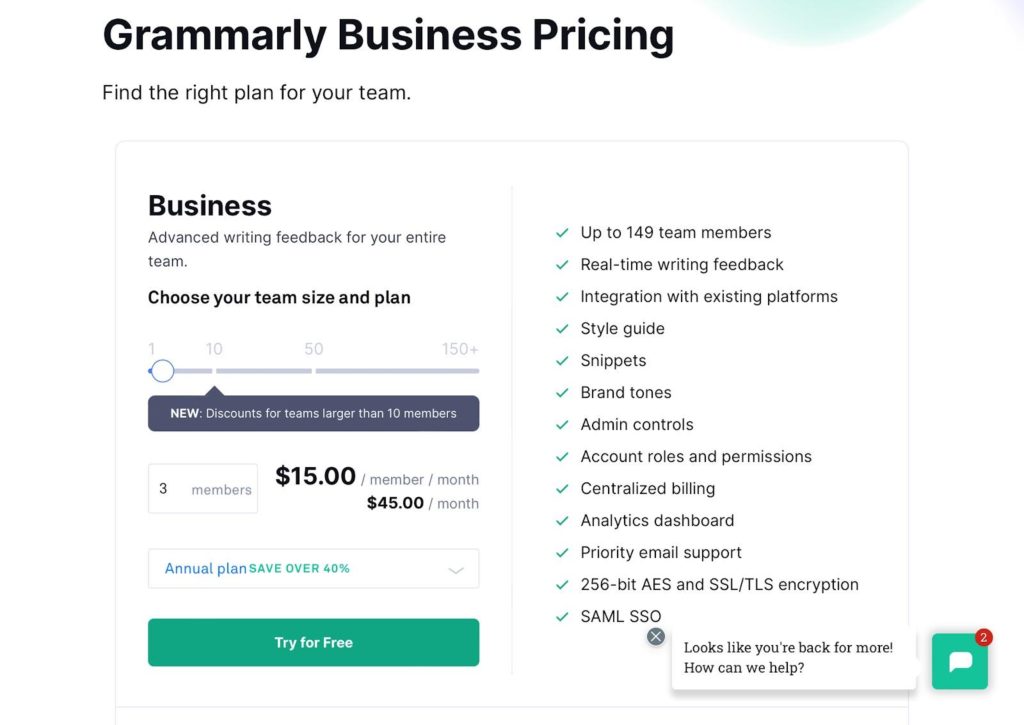Demand for goods and services is the basic economic premise around which the entire global trading system revolves.
Countries trade with each based on the demand for their own goods and services, with different countries fulfilling that demand with their own supply.
This same principle can also be applied to marketing – If there is demand for your product and service in the market, you can create a marketing plan to monetise that demand.
For startups, demand is of course key to their survival, as without demand good and services cannot be sold or traded and businesses will as a consequence go bust.
One sector that has enjoyed increasing demand is the software industry with Statista data stating demand will reach $608.70 billion in 2022.
Moreover, according to these statistics, around 305 million startups are founded each year, out of which 1.35 million are tech-based. This underlines the fact that the overall demand for software is borne out in the huge number of tech-based startup companies.
Of course high demand for any product or service usually comes with high competition as companies vie for customers in a crowded marketplace.
So when established, multinational software companies such as IBM or Microsoft are already monopolizing the market, how can a startup business generate demand for their new software?
The answer is the creation of a demand generation funnel. This is a funnel that will create user interest in your software product and help you build a healthy pipeline of qualified leads.
But how exactly can a demand gen funnel help your software startup? Let’s find out…
What is a Demand Gen Funnel?
Demand generation is a process of creating interest and awareness about your product or services. The demand generation funnel is a detailed pipeline that defines activities that help to stimulate users’ interest in your business.
According to Gartner, “A strong demand generation program builds brand awareness and authority, and produces thoughtful, engaging content that drives interest and cultivates leads.”
It is a broad term that touches multiple sales points during a customer’s journey. Demand generation is not a shallow term like lead generation; which only focuses on increasing the number of leads. Instead, a demand gen funnel emphasizes building a long term relationship with prospects to motivate them to keep coming back and making repeat purchases.
Here this graphical presentation will help you understand how demand gen behaves—

Why Does Your Software Startup Need A Demand Gen Funnel?
Being a software startup, your targeted audience is likely to be other businesses (B2B). As mentioned previously, there and thousands of SaaS businesses already, so unless you are offering something truly unique, it will be hard to convince other businesses that your product is worth investing in.
Therefore, demand generation is important for software startups to find the right strategies and tools to build brand awareness.
Creates awareness of a need
Demand generation helps to create “awareness of a need” as It provides you with different opportunities to tell potential users why they need your product. For example, you can create content targeting your potential customer’s pain points using such mediums as the company blog, cold emails or social media posts. These can be used to tell potential customers how your software product can solve their particular problems.
Here look at this blog post by CloudTalk–
CloudTalk is a SaaS company that helps agencies and businesses with a call center automation solution. Therefore, the blog entitled “Complex guide through call center automation” is the best way for them to target readers’ pain points and present their product as the best solution.
Channel the existing demand
One of the best things about entering the tech startup sector is that there is already a huge demand in the industry across a multitide of different sub-niches. Each year that passes sees more and more online / software solutions appears for a plethora of different tasks, from doing a VAT return to managing your company imagery with a brand asset management tool, the list is almost endless.
This demand can be harnessed by startups by using a demand generation funnel whereby you can target the users who are already interested in your products.
For this, you can turn to your core competitors’ audience and market to them using lead generation marketing.
In addition to this, you can also work on improving your SEO performance. According to a this report, 48% of people start their buyer journey using search engines, so having a strong organic presence is a vital part of succeeding online. Thus, you can only come into potential online buyers’ radar when your website appears high up the search results on Google. Here are some basic tips for better organic rankings…
- Look for the keywords that are search for by customers in your industry.
- Share guest blogs on high DA websites in your business niche.
- Create a beautiful, fast loading website that has an intuitive, device responsive design
Boost your ROI
Cash flow is nearly always an issue for startups as often businesses simply never have sufficient funds to deploy aggressive marketing strategies and use robust marketing tools in the same way established companies can. Therefore, they often struggle to find lead generation strategies that can generate a positive ROI. This can be overcome however using a demand generation funnel as it allows for an integrated strategy that combines your company resources with what your customers want.
Leveraging purchase intent data, you can understand how your potential customers behave in each stage of the buying cycle. You can also use an account-based marketing strategy to understand and segment your buyers into different groups.
Using this strategy you can spend your hard-earned company resources on lead generation efforts that actually bring a positive return and generate qualified leads.
Generate more sales
Demand generation is the first step toward sales. Using customer-centric demand generation strategies, you can spike people’s interest who are ready to make purchases.
When you conduct conversations and engage with users interested in your product, it will save your time and energy. This, in return, will generate more sales and revenue your way. For better results, you can use sales CRM tools to manage your leads better.
6 Tips to Create a Demand Gen Funnel
So, a demand gen funnel is essentially a golden ticket to generating qualified leads, making sales and satisfying your customers. But for all this, you have to create a dynamic demand gen funnel aligned to your software business.
And that is easier said than done. Multiple factors here impact your demand generation strategies like competition, budget, product, etc.
Thus, you can follow these tips to create a result-driven demand gen funnel:
1. Build your buyers persona
To generate demand for your product, you have to first define the problems that your product can solve. Then, you have to tell users what they can gain by using your product.
For this, you need to understand your potential buyer’s pain points and interest areas. Creating a buyer’s persona can provide an in-depth analytical view of your potential customers.
A buyer persona is a fictional characterization of your ideal customer. This will highlight all the basic factors to help you understand your customers. You can consult sales and marketing teams to create a perfect buyer identity.
Imagine you want to sell time tracking software to small-to-medium sized businesses. In this instance, your ideal customer could be someone who runs a company with an turnover of $1 million with 25+ employees. Your potential customer might be struggling to manage their staff productivity manually and therefore thy need an affordable and powerful time tracking software package in order to have accountability. Once can identify persona’s like this, you can integrate this into your Demand Generation strategy.
2. Understand each of the demand funnel stages
The demand gen funnel has different stages from which a lead has to pass in order to become a customer. And at every stage, a person will behave differently.
Thus, you have to adopt a different demand gen strategy to stimulate targeted prospects at each stage.
For example, you can create different content for users who are still discovering your product versus someone who’s already expressed an interest in your solution.
For the discovery stage, you can create content showing the features and benefits of your software. On the other hand, for those already interested in your brand, you can create engaging and informative content, perhaps to do with the most advanced features for example.
3. Create relevant & gated content
Content is one of the best ways to generate awareness and interest in your product. Moreover, content can help you with search engine optimization and establish your brand as thought leader within your chosen niche.
One way to gain value sales prospects from your content is to gate it, with the content only being accessible when the users submits their email address. Although you should not do not across every piece of content you write, for longer form posts or ebooks this practice is commonplace.
To access the gated content, users have to provide basic information like email address, name, business niche, etc.
For example, Backlinko publishes gated blogs on their site to get the email addresses of their visitors.
4. Use lead magnets
Lead magnets are freebies that companies offer to generate demand and attract potential customers. Lead magnets have always been a popular way for software companies to create demand.
Today, almost every software company uses lead magnet ideas, such as a free demo, free trial period, free customer support service, etc.
For example, Grammarly offers a free version with basic features. This helps them capture new customers’ interest and motivates them to subscribe to premium plans to correct more grammatical errors.
5. Define your goals
Before creating a demand generation pipeline you first need to define what you want to achieve from it? Do you want to generate demand among new customers, or do you simply want to re-target your existing customers?
Once you have clear goals in your mind, you can use the right demand generation strategies to achieve them.
For example, to retarget existing customers, you have to use marketing methods like PPC ads, cold emails, etc.
6. Monitor your progress
Having a clear goal and setting key performance indicators (KPIs) will help you determine the progress of your demand generation funnel. You should constantly monitor your demand generation pipeline to make sure that you are achieving desired results.
If you are not getting results as per your expectations, you can make immediate changes in your demand funnel and prevent your resources from getting wasted.
Let’s Create Your Demand Gen Funnel Today!
There you go, people! You have now learned why the demand generation funnel is important for your software startup business as well as some cool tips to create a dynamic demand generation strategy. So, you are now all set to attract customers to your new software product.
However, on a parting note, we would like to add that you should keep on improving and monitoring your funnel constantly.
The software industry is one of the fastest moving sectors in the world. Marketing trends and customer preferences change at an almost bewildering rate, so companies need to be aware of this and be agile enough in order to adapt to changing circumstances.
Author Bio

Sumeet Anand is a B2B Marketing Expert and Founder at Marveta. He helps brands and businesses generate leads with his top-notch content strategies. He has featured on various major media publications across the globe. Connect with him on social!








